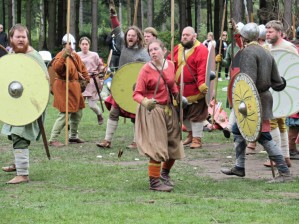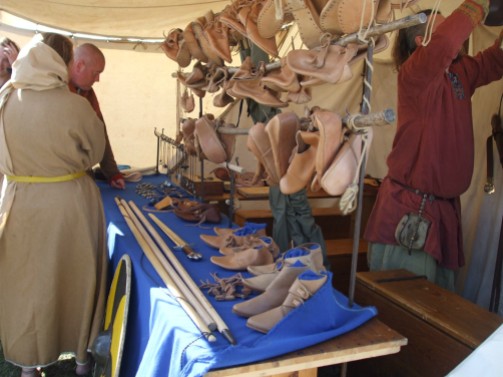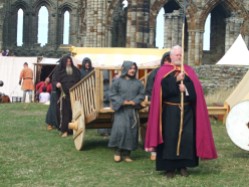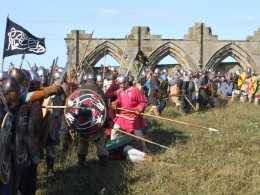This past weekend saw Viking reenactors from Regia Anglorum groups across the country gather at a place known as Thynghowe in Sherwood Pine Forest Park for the annual event known as ‘The Spring Thing’.
At 3,300 acres, Sherwood Pines is the largest park in the East Midlands of England. Lying close to the historic village of Edwinstowe in Nottinghamshire, it is a part of the ancient Sherwood Forest and was originally known as Clipstone Heath. It was acquired by the Forestry Commission in 1925 and replanted with pine trees as part of a response to a shortage of wood following the First World War. Today, activities are offered throughout the year, including cycling, mountain biking and segway, camping, walking, jogging, a park run, orienteering and bushcraft, a children’s adventure trail, tree climbing and ranger activities. There is also a Robin Hood hideout and Kitchener’s Trail, a café and visitor centre, and the site is perfect for a family day out – even when no event is scheduled (which in addition to the Viking Spring Thing, include various concerts and musical events as well as outdoor activities).
So, why is this spot in Sherwood Pines a perfect site for Viking gatherings and reenactments every year, and what is Thynghowe?
Thynghowe, meaning ‘thingsite’, is the name given to an important Viking Age open-air assembly place situated at the top of Hangar Hill on the western edge of Sherwood Forest, so is very close to the site where this event is held. It was (re)discovered in 2005. Vikings met at such sites for their annual ‘Thyng’ – which generally lasted for several days – during which time disputes were settled, laws were signed, punishments for crimes decided upon, marriages arranged and such like. Each community had its own Thyng/Thing/Althing, most likely dominated by a local, powerful family or families. Thyngs were often festive affairs, with tents, stalls/booths set up so goods could be bought and sold, including plenty of ale and mead.
Several such sites are known across the Viking world, including the famous Thingvellir in Iceland and Tinwald in the Isle of Man, both of which I’ve visited, plus others in the Faroe Islands, the Shetland and Orkney islands, the Scottish Highlands (Dingwall), the Wirral in England… In other words, wherever Vikings chose to settle.
The gathering at Thynghowe was an equally festive affair, with lots of tents and stalls set up to demonstrate the Viking way of life, including cooking methods and a number of important occupations and crafts. These are a selection of photos we took around the camp as we walked round:
Here is a very short video we made of the wood turner, who was making spokes for cartwheels, while the stall next door made the actual wheels.
The stall holders/reenactors were only too happy to answer questions and chat in general. The happy-looking man in the picture below spent some time explaining not only about how Viking shields were made, but about the fabulous reenactment goup, Regia Anglorum.
This delightful, hard-working lady below also deserves our thanks for taking the time to explain and demonstrate how she was creating bast from lime wood for use in rope making. Rope made from lime bast fibre was not only important for many things around the village, but the fact that it didn’t shrink when wet (unlike rope made from hemp) made it perfect for use in the building of ships. In the photos she is stripping the bark off lime tree trunks to obtain the strands of fibre behind. After a good soaking in water, the bast is rendered soft enough to twist and plait together to make rope.
And this Viking warrior was obviously having a bad hair day. His hairdresser/friend was giving his hair a good comb, while he complained about his unruly, frizzy hair. Oh, the vanity of men! Naturally, I just had to have a feel of such frizz.
In the morning we were treated to preparatory bouts and skirmishes before the big battle planned for the afternoon. The commentary was excellent throughout, with explanations of the moves and battle tactics of the warriors, weapon use and so on. In the afternoon, there were three arena events to watch. The first was a demonstration of horsemanship.
The second an archery competition and finally, the actual battle.
To finish off, here’s a cute mini-warrior who made me smile:
*****
























































































